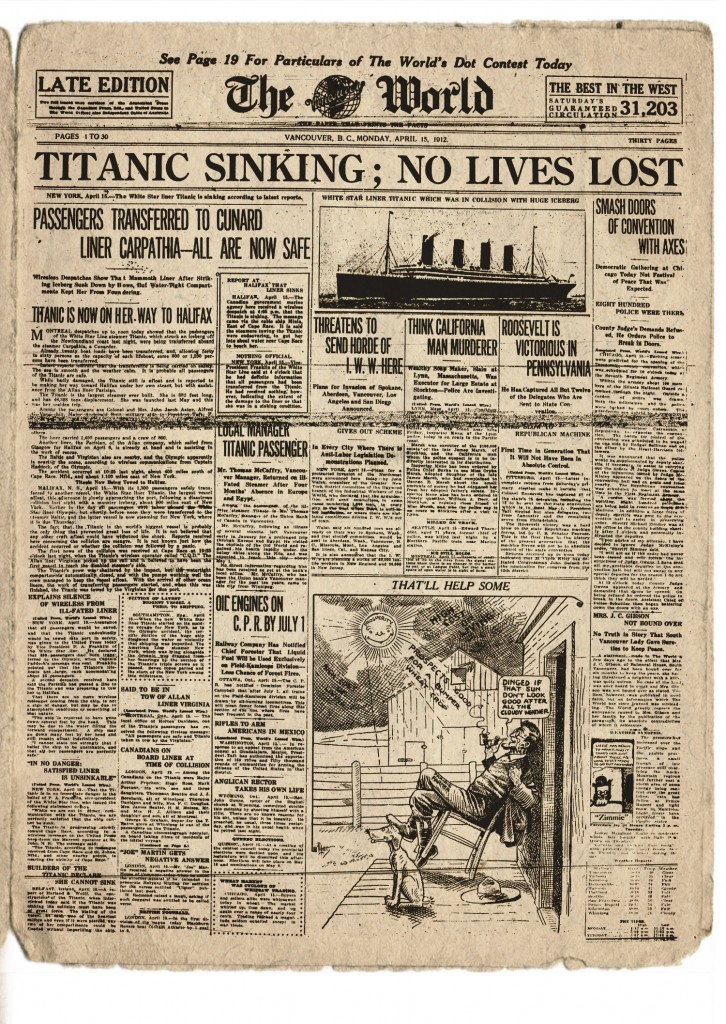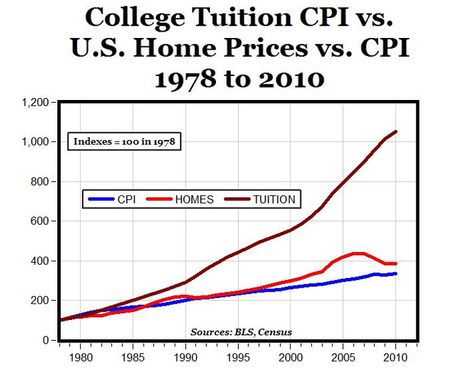A Final Word: I went by that site today to see what additional comments might have been posted after I left. Here is what remained:
I was referring to your claiming that people were being dishonest in their claims not to be YECs. It’s not that you disagreed with the values expressed by their self-identification, it’s that you didn’t accept that they were who they claimed they were. This makes productive conversation much more challenging.
Does that make sense?
I didn’t claim that people were secret YEC members. I commented that I was astounded at the vehemence of people who described themselves as “non-creationist Christians,” at attacking a person who supports and thinks evolution will be important in medicine in the next 50 years. Read some of the comments in italics below to see if I am overstating this.
I am very concerned, after this, at the role of Fundamentalist Christians in the GOP. They are far less tolerant of other opinion and resemble the global warming alarmists in the unwillingness to allow dissent.
Update #4: I am saving some of the material from the thread to remember what Ricochet is like.
The pseudo sympathy: Mike, frankly, you never had them straight in the first place. The entire thread, you thought you were fending off attacks from a group of Young Earth Creationists, but there was only one YEC among them. The rest of them were believers in one form of evolution of another, and just upset with your attitude.
Attitude !
Do you bear any of the blame for making this thread so unpleasant? I’m perfectly willing to have a discussion with you, and I’m semi-sympathetic to your viewpoint. I’m definitely not a YEC. But I can’t understand why you are being so flippant.
Flippancy is the problem !
No, you’re not. You might try reading the thread. I’ve been listing all the insults over on my own blog as a study of how this happens.
“Mike, I am personally not a young-earth creationist, but I think you are confusing two concepts here. ”
I’m always the one confused. Explained by the Ivy League.
This: “Or would he create a universe that showed millions of millennia of age, even though it was only seconds old?”
Led to this: “It’s nice that you all believe this. Good luck. Let’s hope your doctor doesn’t.”
Now that was my mortal sin to the crowd here. From that the following resulted:
“You are very flippant in dismal of my case for faith. Once again I have no problem believing that someone who believes that God put together the world in 6 days .”can also understand the significance of mitochondria. ”
I doubt that. Instead: “I have a far greater trust of a doctor who believes in God and lives it in his own life rather than one who is merely technically competent and sees the universe, and my life, as a happenstance of evolutionary doctrine.”
Now, the folks who are denying this is about creationism and is about my “attitude” seem to ignore those parts.
“Well that’s a glowing example of inability to actually argue the point. When you encounter indications that people disagree with your conflating micro and macro evolution, imply that anybody who doesn’t believe in the warm puddle or whatever the popular origin of life theory is this week is incompetent. ”
Now there’s a thoughtful statement.
” If I’m just an expression of evolutionary pressures, he might want to trim it up. (Has the advantage of being supported by all the various eugenics of recent history, including the ongoing slaughter of those unborn suspected of having genetic illnesses.)”
So now abortion has been dragged into it.
“You slander many very good doctors with your dismissive remarks.”
And I’m the problem.
“But what followed was a long-winded series of examples that do not make a case that any student of what evolution teaches must believe any of the paleo-biology tall tales about the long long ago history of this and that.”
More friendly repartee.
“In my opinion, the whole argument is silly. Humans simply don’t have the intellectual capacity to comprehend the creation. It’s like a dog trying to understand how a television works;”
More brilliance. My tolerance for this is less than yours or you didn’t read it.
“Mike has argued that we should (or, at least, he would) place professional barriers before those who disagree with his creation myths ”
Another mis-statement of what I wrote. I only mentioned my own letter writing which was not a barrier the last time I checked admission requirements.
“You are the one who said that you would keep Creationists out of med school.”
More mis-statement.
“Believing that the paleo- fields have very badly miscalculated the age of the earth has nothing at all to do with the ability of a doctor to conduct medicine. ”
I guess you agree. I don’t.
I then gave up. This colony of creationists, even those who deny they are “YEC,” wore me out.
UPDATE #3: The attacks continue and it has been several days !
I am also a Christian who doesn’t hold to a YEC point of view. (I would also add, although I hate to flaunt credentials, that I am a more recently trained physician than you, Ivy-League-trained, and hold a faculty position at a medical center that’s a bit fancier than yours.)
So there ! I have decided that I am a Libertarian and not a conservative, if that is what this is about.
UPDATE #2 The pushback has finally succeeded in making me a villain.
(Yes, I know the things I cited don’t make him right about YEC, necessarily. My point is that he’s been successful despite Mike K insisting that people like him should be prevented from being doctors.) ·
This followed a long list of accomplishments by a supposed acquaintance who had had a successful career as, as best I can tell, a pediatrician. This all began with my comment that, aside from not being willing to recommend a student who did not believe in evolution for medical school, I was neutral. I think I am no longer neutral. The “Young Earth Creationist” community seems to have a determination to oppose any evolutionary thinking by anyone. They also seem to have an very convoluted way of explaining why obvious facts are not as they appear.
UPDATE: The pushback from creationists surprised me a bit. I guess it shouldn’t have. I expected “We will just have to agree to disagree” sort of thing. Instead I got an interesting series of attacks on me.
Is it impossible for the Creator to have built all the evidences of age into His new creation? The reality of natural selection isn’t necessarily required to have a long and indefinite period of activity to apply today.
and
Well that’s a glowing example of inability to actually argue the point. When you encounter indications that people disagree with your conflating micro and macro evolution, imply that anybody who doesn’t believe in the warm puddle or whatever the popular origin of life theory is this week is incompetent.
and
There are plenty of good Christian doctors and biologists who are well-versed in cell biology and in how mutations happen and in natural selection processes that affect microbes and higher organisms.
This all reminds me of the epicycles, which were used to explain why Ptolmeic astronomy could not explain certain phenomena like the movement of planets. It took Kepler’s discovery of the elliptical orbits to resolve the matter finally.
The creationists seem determined to ignore the implications of molecular biology about evolution and maintain “Young Earth Creation” in the face of the evidence of ancient biology.
But what followed was a long-winded series of examples that do not make a case that any student of what evolution teaches must believe any of the paleo-biology tall tales about the long long ago history of this and that.
Even Copernicus wanted to learn why the planets did not follow the rules of Ptolmeic astronomy. Today, that is considered rude. I may have to reevaluate my opinion of creationists. I have considered them harmless ill educated religious fundamentalists. They are far more aggressive than I had believed in attacking any disagreement.
I accidentally got into a debate about evolution at another site today. I didn’t want to get into this as I know there are many people, many of whom share my political affiliation, who are adamant about creationism, as the left often refers to it. Still, I have posted my opinions here in the past. I think molecular medicine is going to become even more important in the future and I do not understand how a physician can understand molecular medicine without molecular biology. There are many examples of evolution that must be understood to appreciate certain areas of medicine.
I think a physician can practice as a GP and not believe in evolution. I know a few. They are not likely to understand the future of medicine but they are my age and will not be practicing for long, if they are not yet retired.

